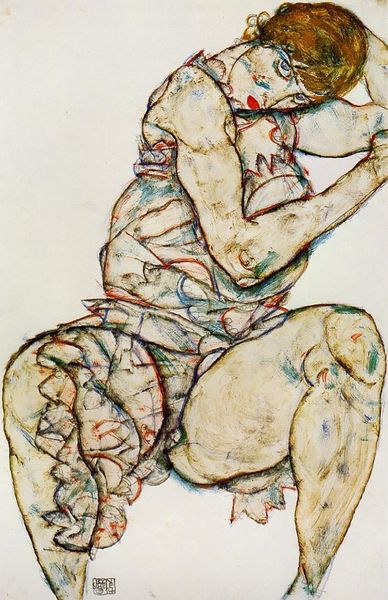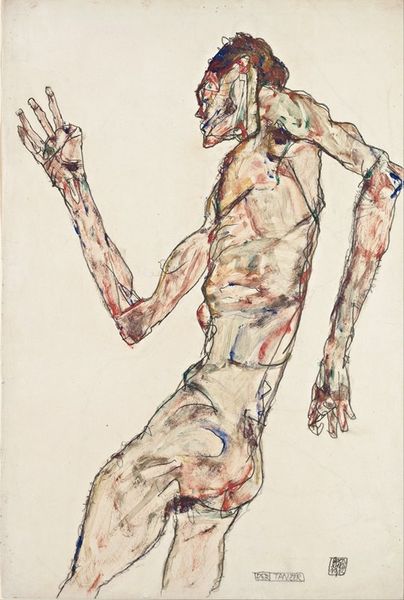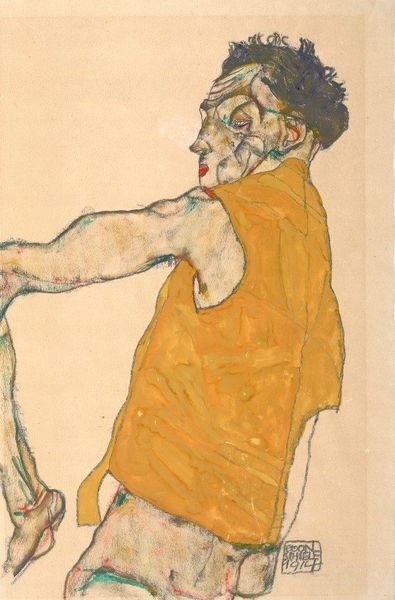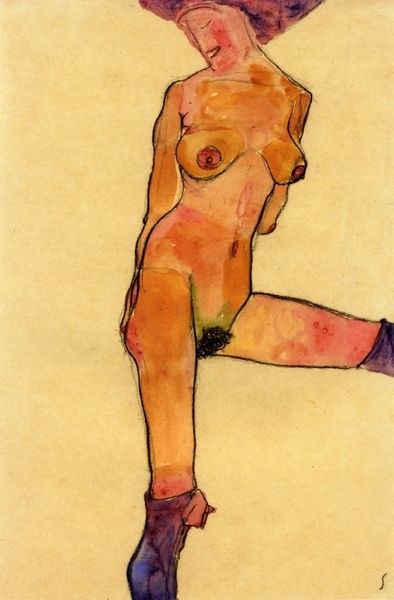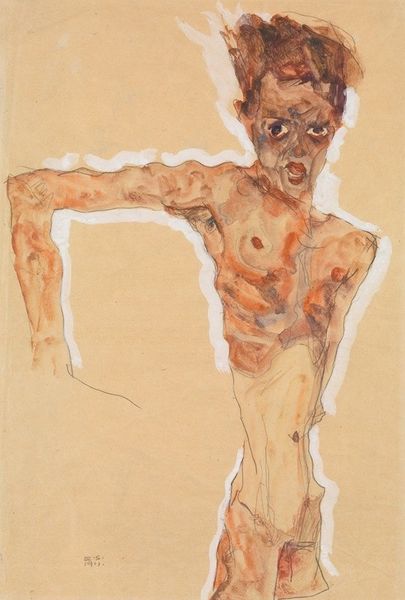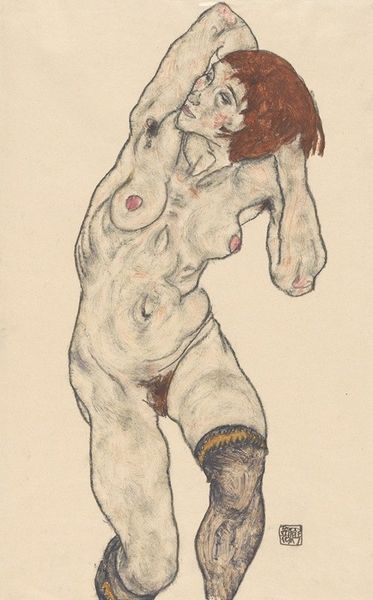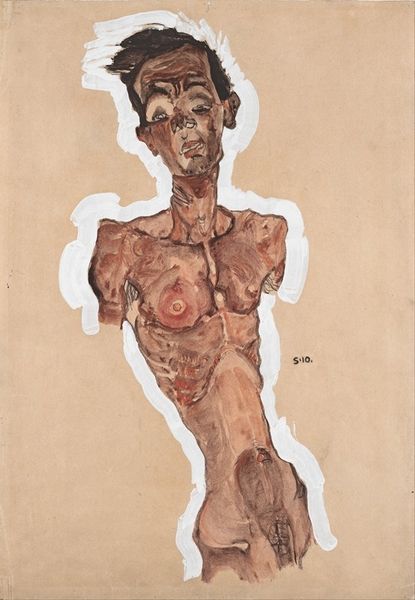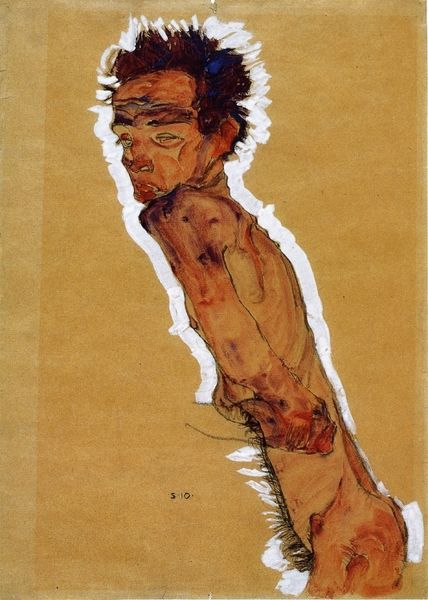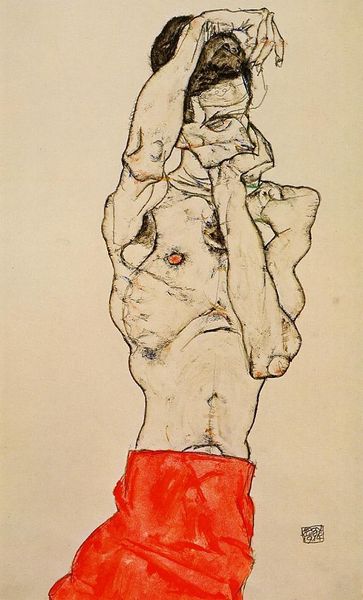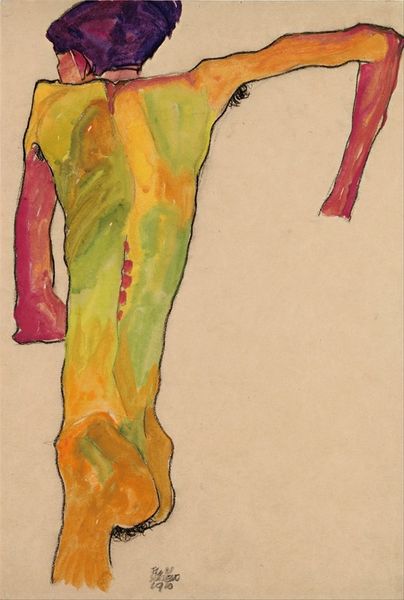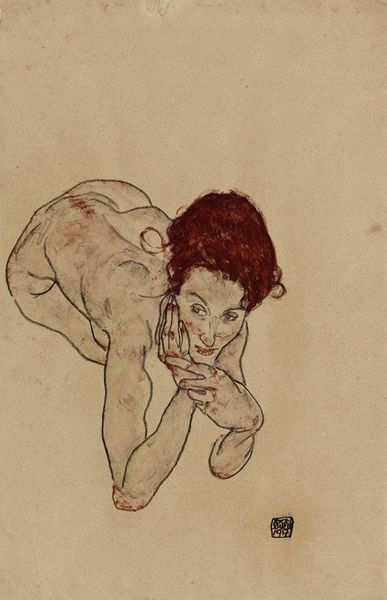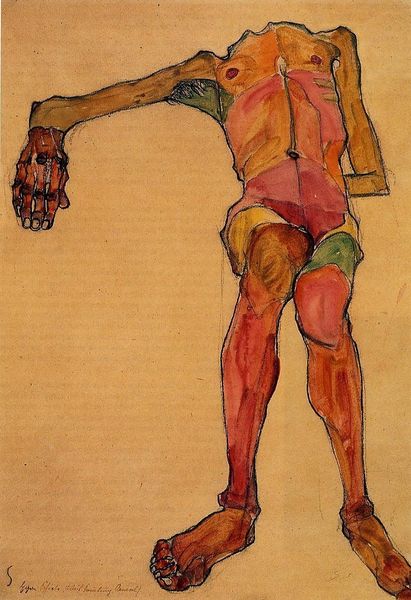
drawing, pencil
#
portrait
#
drawing
#
self-portrait
#
fluid brush stroke
#
figuration
#
oil painting
#
pencil
#
expressionism
#
nude
#
male-nude
Copyright: Public domain
Editor: Here we have Egon Schiele's 1913 drawing "Fighter," a self-portrait rendered with pencil and touches of paint. The figure's pose strikes me as both confrontational and vulnerable. What do you see in this piece, especially within the context of its time? Curator: Schiele’s work existed during a period of profound social and political change, right before World War I. Self-portraits like "Fighter" were intensely personal, but they also reflect a wider cultural preoccupation with identity, anxiety, and the breakdown of traditional values. How do you think Schiele uses his own body as a canvas to explore these ideas? Editor: It's almost like he’s dissecting himself, showing rawness, a certain discomfort. The sharp angles and almost grotesque rendering contrast so strongly with traditional portraiture. Was this shocking to audiences back then? Curator: Absolutely. Remember, the early 20th century witnessed a growing challenge to academic art and its ideals of beauty. Artists sought new ways to express inner psychological states, even the unsettling ones. Expressionism, as seen here, embraced distortion and exaggeration. The institutional art world was very conservative, but these Expressionists opened new dialogues with the public, for better or for worse. The male nude was of course another matter. What do you take away from this raw presentation of the self? Editor: I see a deliberate break from tradition, pushing the boundaries of acceptable representation. It’s not just about personal expression; it’s a statement about the artist’s role in society. Curator: Precisely. He uses his image to engage in a dialogue with the public about issues of power, vulnerability, and the changing social landscape. The art world wasn’t separate from society back then; it was absolutely engaged in defining it, arguing about its morals. Editor: It’s fascinating how this one drawing captures so much about a turbulent era and an artist grappling with his place in it. I appreciate your perspective on its historical role and how radical it was!
Comments
No comments
Be the first to comment and join the conversation on the ultimate creative platform.
